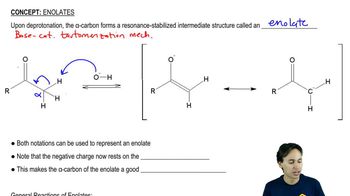Textbook Question
Starting with (R)-1-deuterio-1-propanol, how could you prepare
a. (S)-1-deuterio-1-propanol?
 Verified step by step guidance
Verified step by step guidance Verified video answer for a similar problem:
Verified video answer for a similar problem:



 7:53m
7:53mMaster Learning the mechanism of Sulfonyl Chlorides. with a bite sized video explanation from Johnny
Start learning